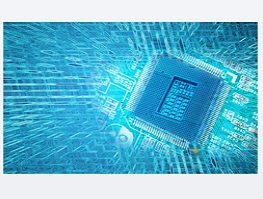The following is about PCB surface insulation resistance (SIR) measurement:
SIR (Surface Insulation Resistance) is usually used to test the reliability of circuit boards. The method is to interleave pairs of electrodes on a printed circuit board (PCB) to form a pattern, and then print a solder paste. ), and then continuously give a certain bias voltage (BIAS VOLTAGE) in a certain high temperature and high humidity environment, after a certain long time test (24H, 48H, 96H, 168H), and observe whether there is an instant short circuit or insulation failure between the lines Slow leakage occurs.
This test also helps to see whether the flux or other chemicals in the solder paste have any residues on the PCB surface that will affect the electrical characteristics of electronic parts. Generally, we use this method to measure static surface insulation resistance (SIR) and dynamic ion migration (ION MIGRATION). In addition, it can also be used as CAF (Conductive Anodic Filament). Fiber leakage phenomenon) test.

Note: CAF is mainly used to test the influence of flux on the moisture absorption of PCB board and the separation of glass fiber surface.
Surface Insulation Resistance (SIR) is widely used to evaluate the influence of contaminants on the reliability of assemblies. Compared with other methods, SIR has the advantage of not only detecting local pollution, but also measuring the influence of ionic and non-ionic pollutants on the reliability of printed circuit boards (PCBs). Its effect is far better than other methods (such as cleanliness). Test, silver chromate test... etc.) are effective and convenient.
Since the PCB wiring is getting denser and the solder joints are getting closer and closer, this experiment can also be used as a reference for the usability evaluation of solder paste flux.
Comb Pattern, comb circuit is a kind of "multi-finger" interlaced dense circuit pattern, which can be used for high-voltage testing of board cleanliness and green paint insulation.
SIR measurement standard: IPC-TM-650
▼The test board for SIR experiment, a board has four pairs of electrodes interlaced and connected to form a comb pattern (Pattern)
PCB impedance test
▼Single a group of SIR experiments with a pair of electrodes staggered and connected into a comb pattern (Pattern) magnified view
When measuring SIR, solder paste should be printed on the comb pattern (Pattern), and then placed vertically into the SIR test board that has been printed with solder paste and placed in the environmental testing machine, plus 45~ With a bias voltage of 50VDC, the environmental test conditions are as follows:
85+/-2 degree Celsius + 20%RH 3 hours
↓ At least 15 minutes
85+/-2 degree Celsius + 85%RH After at least 1 hour, start to apply 50VDC bias
↓ Measure SIR value with 100VDC after 24 hours
↓ After another 24 hours, use 100VDC to measure the SIR value (48 hours in total)
↓ After another 48 hours, use 100VDC to measure the SIR value (96 hours in total)
↓ After 96 hours, use 100VDC to measure the SIR value (168 hours in total)
Record SIR changes at regular intervals.